The Old Circus (aka: Nikulin Circus) in Moscow.
Flaring high over the new issue of Planet Circus is a very fine account by Gregory Ostrowski — Russian Circus - The Long Way in 95 Years. Ostrowski follows the birth of the Soviet Circus in 1919, and shows how it has managed to grow and flourish over the years, even into the difficult post-Soviet era, when massive government funding dried up, leaving artists to more or less fend for themselves. Soyusgoscirk (circuses of the Soviet Union) now it calls itself Rosgoscirk, for Russian circuses.
Now, it struggles for other forms of funding. But now, it still produces world class acts and programs of deft invention. In many ways, competing principally with China, Russia still leads the way. Where there were once some 60 plus permanent arenas (spread through the since-disbanded 15 Soviet republics), Russia alone now operates about three dozen venues, and keeps eight tents on hand for touring. That’s a heartening achievement, given the economic turmoil in the wake of the Soviet Union’s collapse. If you love circus art, you have to love these indomitable Russians.
From Whence the Montreal Monster?
Ostrowski, it would appear, takes on the Cirque du Soleil’s claims of modern-day reinvention by tracing the birth of the modern circus we know today back to 1930s Russia. He is essentially correct. It should be no secret to insiders that Cirque’s founding artistic director, Guy Caron, was swept away, found his muse and his way, at a performance of a touring Moscow Circus troupe in Canada in 1970. For six years following, he studded circus art in communist block Hungary at the State Circus School.
When I first saw Cirque du Soleil, in its first away-from-Canada date, in Los Angeles in 1987, I knew that its roots were in Russia.
Quoting Ostrowski
“It is possible to say that in the late 1920s, for the first time in the world, the whole state branch of circus arts was created in Russia. Nowadays when we create a circus program in many ways we must remember that the origins of this part of circus activity are not the remote past, they arose in the mid 30s of the last century.”
“Then there were the first attempts to create programs with a single thematic content...” Yes, true, as when they tried rendering revolutionary poet Vladimir Mayakovsky’s “Moscow is Burning” in circus action, only to discover how difficult such well-intended ventures can be, and still are. But those bold new concepts, drawing from the collective contributions of artists from many spheres, would come to influence alternative circus programming in venues of higher learning and creative endeavoring.
Thus, a flavor of justifiable pride rightfully informs Ostrowski's article, though murky it may be on occasion, as when overplaying box office demands (not all the seats in all the outlying regions were ever so easy to fill as he would have us believe), or advancing contradictory stats, to wit, for example, he writes of there being “36 circuses all over Russia,” but he also writes of there being some 3,000 artists who “perform in 24 circus programs.” What about the other half dozen, I wondered.
Still on Top
Nonetheless, Ostrowski’s central thesis holds. The Russians have managed to sustain their artistic dominance. Consider their showing at the leading circus festivals, or in the rings of major world circuses.
I study the picture, posted above, of the Old Circus in Moscow, focusing in on the small area just below the bandstand, and how fondly I recall sitting there one night, 35 years ago this very month, with my interpreter, Tanya Matveeva, whom I had just met outside the building. We were embarking on a series of interviews in Moscow for a book I was researching on the history of circus in Russia.
The thrill of discovery that evening, and of the sharing souls in the days to come who would answer my many questions, would surely mark a high point in my circus-going adventures.
And I got to see the great Karandash!
Say what you may about Russian society and politics. In rings of wonder around the world, they still take big bold moves. They still push boundaries. They sill thrill.






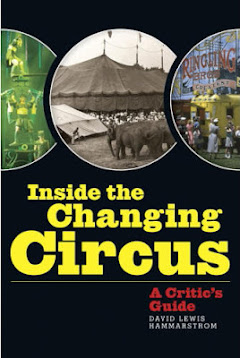
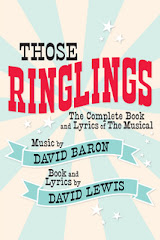

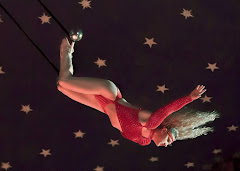




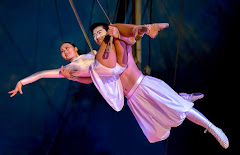

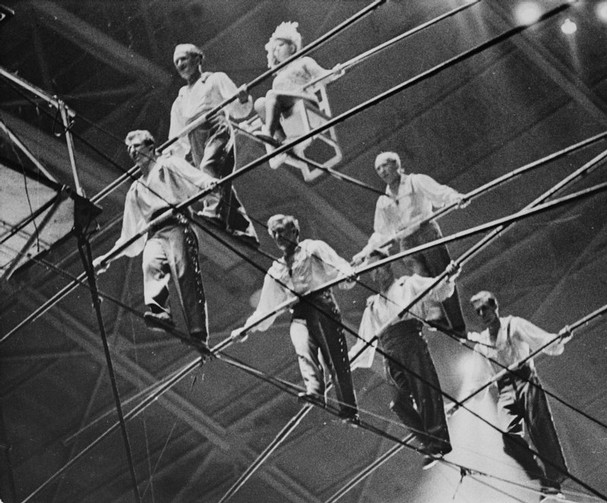
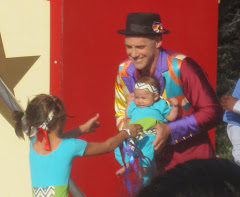
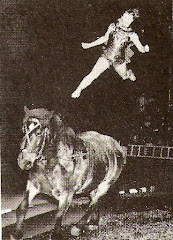
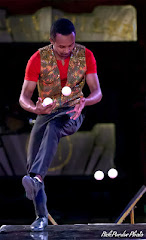



No comments:
Post a Comment